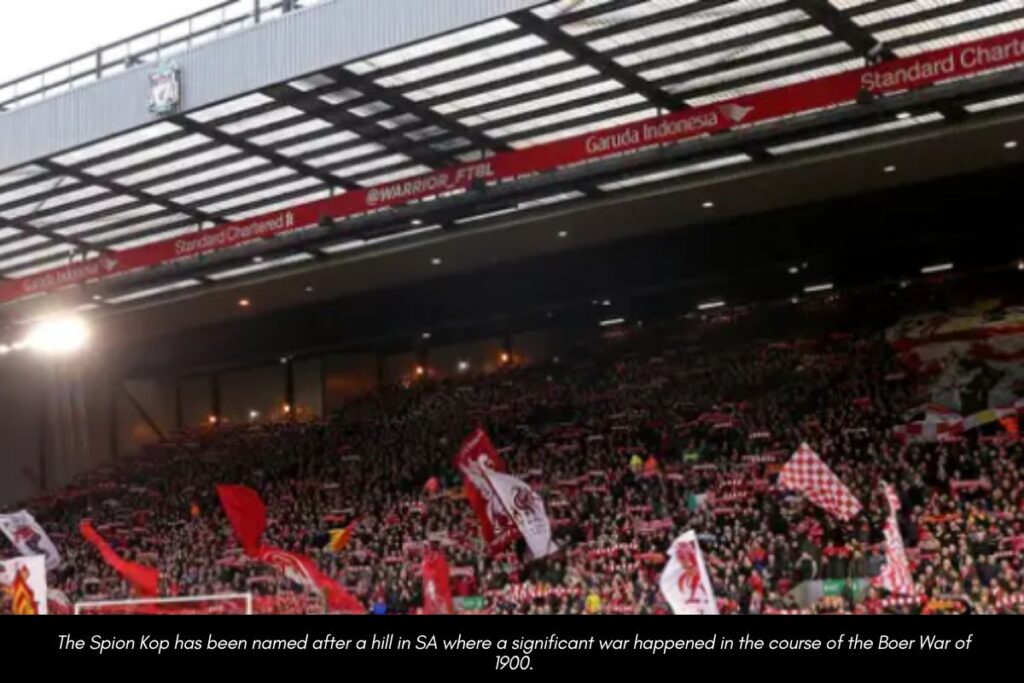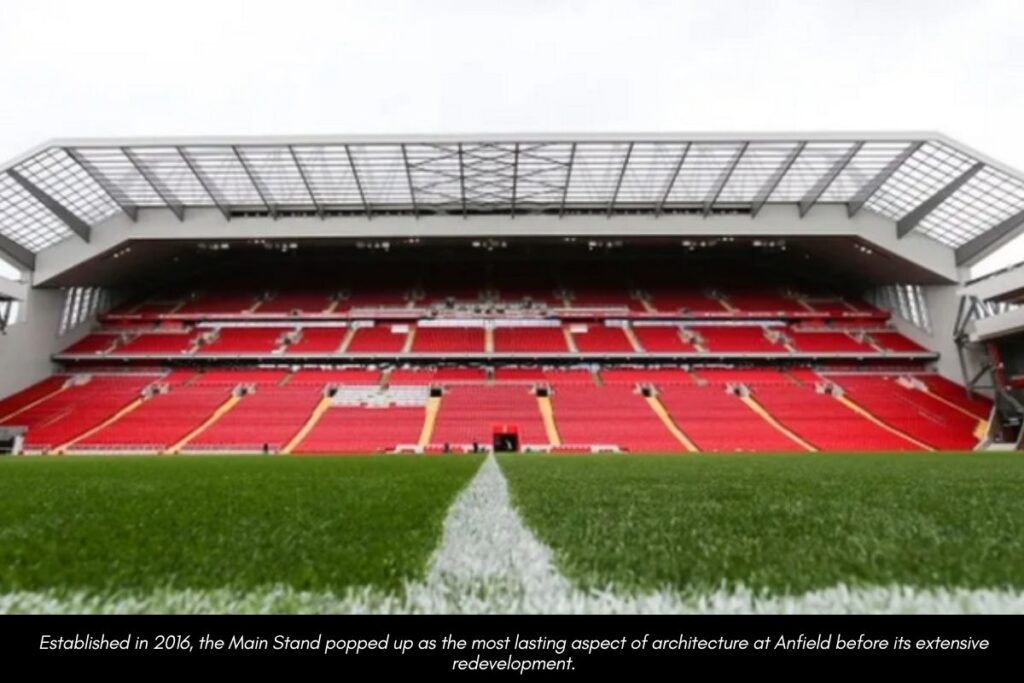Anfield Stadium located in Liverpool, England positions itself as a popular soccer playing field with a seating capacity of 61,276 supporters. Constructed in 1884, it ranks as the 5th hugest in England. Long from its establishment in 1892, the stadium can boast of being the home ground for the Reds. Interestingly, the field housed Everton from 1884 to 1891, just before they divorced with John Houlding. Later on, Everton relocated to Goodison Park. From that day, the Anfield atmosphere changed to something that electrifies the stadium, igniting passion and uniting supporters in Liverpool home and away games.
Related Also: Liverpool First Match: Friendly Match Against Rotherham
What is Anfield Known for?
Consisting of four stands, the football ground saw its hugest supporters’ attendance record of 61,905. The was, of course, a heated game between Liverpool and Wolverhampton Wanderers in 1952. Amazingly, the field pays habitat to the past Reds managers via its gateways named after managers Bill Shankly and Bob Paisley. Furthermore, several statues respecting these two leadership legends are positioned proudly in the external realm of the field. Bill’s statue was ‘planted’ in 1997 by the Kop stand (one of the four stands of the stadium). Bob’s statue was displayed in 2020 by the Main Stand. Anfield stands at an estimated two miles from Liverpool Lime Street railway hub, thus delighting in a well-linked location.
Anfield Road End
Throughout the historic Anfield, the stand has been recognized to host the away supporters within the ground. This culture is unlikely to change shortly.
The Four Stands Making Anfield Atmosphere
Anfield is one of the most prominent soccer stadiums on earth. For at least 130 years, the field has seen a tapestry of memorable games etching themselves into soccer history. Within its magnificent walls, interesting stands are narrating their distinct tales. Around each wall, lies a historic significance that contributes to the unique Anfield atmosphere.
The Kop: It’s one of the four wonderful stands making Anfield. The stand ensures a symbol of soccer fervor and stands as a statue to the passionate support at Houlding’s stadium. Spion Kop has been named after a hill in SA where a significant war happened in the course of the Boer War of 1900. Many lives were lost, including numerous soldiers from Liverpool. Spion stand evolved into a framework of supporter’s love and intensity.
Established in 1906, the iconic structure was a huge gesture to the supporters, a triumph of the second league victory by the Reds. From the very start, the stand accommodated 25,000 fans. It rose beyond Walton Breck Road, enjoying the 100 paces and ruling the environment evolving around the soccer ground.

In 1928, the Kop stand was stretched to hold a capacity of 27,000, integrated with additional roofs to amplify the Liverpool echoes and cheers from the loyal fans. Do you remember the tragedy that occurred at Hillsborough in 1989? A report proposed a redevelopment of the stand where terraces were shifted to all-seater stands in main stadiums. Currently, the Kop has approximately 13k fans and stands as the most popular framework in Anfield.
Main Stand: This is another adored stand representing a mixture of culture and modernity. Launched in 1906, the stand has faced a consistent expansion and refurbishment that mirrors the transition of Anfield. Established in 2016, the Main Stand popped up as the most lasting aspect of architecture at Anfield before its extensive redevelopment. The Reds stretched the stadium capacity to 54,074 after the incorporation of a new 3-tier stand that introduced an extra 8,500 seats at an approximate cost of 110 million pounds.
Alongside the development, skepticism loomed for several years regarding Liverpool’s capability to depart from Anfield. There were numerous proposals for a new soccer ground in Stanley Park. They circulated, casting doubts on the Red’s future at its original home.

Upon resuming control in 2010, Fenway Sports Group, Liverpool owners, chose to remain at the historic home. Their act started the reconstruction of the Main Stand, birthing the new 3-tier structure making the stand to display as the largest within the stadium. If one of these days you happen to visit and feel Anfield atmosphere you will find the tunnel, dressing rooms, and the directors’ box and press box. The stand has a capacity of 20,676, and lower, middle, and upper tiers (3-tier)
Sir Kenny Dalglish: Located across the Main Stand, the stand serves as a tribute to the ex-player and coach. Consisting of 2-tiers, the stand takes in a capacity of 12,000 supporters and several amenities comprising executive boxes, a lounge, the PAA Box, a TV set, and the police activity rooms. Back in the 1950s, the coming of Bill Shankly triggered a demand for improvements to the stadium facilities, positioning the stadium amenities with the exceptional club he had gathered on the ground. After the proposal from Taylor’s report, the stand underwent a significant refurbishment causing the unveiling of the redeveloped Centenary Stand – which marked a transition from its original layout.

Back in 2017, there was a commemoration of LFC’s 125th Anniversary. The Reds honored Dalglish, a prominent person in the history of the squad. They renamed the stand in his honor. Dalglish’s unspeakable effect on the club and the city remains a great contribution. It’s a long-lasting testament to the invaluable impact.
Anfield Road End: This stand is well known to have raucous fan support and joyous moments that complete the quartet of Anfield stands. Amid the noise and fan enthusiasm, the stand holds the unending devotion of the club’s fans. The recent development has improved the stand’s facilities as well as argumentation of its capacity – further echoing the Anfield general grandeur. Situated facing the Spion Kop, the stand is currently going under refurbishment, slated for completion in favor of the 2023-2024 season. Anfield Road End renovation happened in 1997, launching a 1-tier to the stand. Throughout the historic Anfield, the stand has been recognized to host the away supporters within the ground. This culture is unlikely to change shortly.

The distinct block and look of colored seats were pure brains of Bob Paisley. The manager at most times saw the problem of the Red’s red shirts blending into the closed seats, thus hindering visibility. He campaigned for a broad range of colors thinking it would improve the clarity of seeing the players during soccer games. Currently, the extensive expansion of the stand focuses on elevating the capacity to 15,967 seats, with a cost of around 80 million pounds.
Conclusion
Anfield atmosphere is a force that cannot be rivaled. The consistent evolution of the stadium mirrors the growth and the unending support of the team and its fans. Despite proposals and discussions on Liverpool’s relocation, Anfield Soul is resilient holding the heart and soul of Liverpool FC. The atmosphere, refurbishments, and tributes pay homage to the past while embracing the coming days. Experience the alive and breathing monument to the beautiful games!
Stay tuned for more updates on Liverpool FC Times and Stories. Your thoughts are always welcome in the comments section. Thank you for your continued support!
YNWA (You’ll Never Walk Alone)!
The Liverpool FC Times Team
LiverpoolFCTimes.com
